Affiliate links on Android Authority may earn us a commission. Learn more.
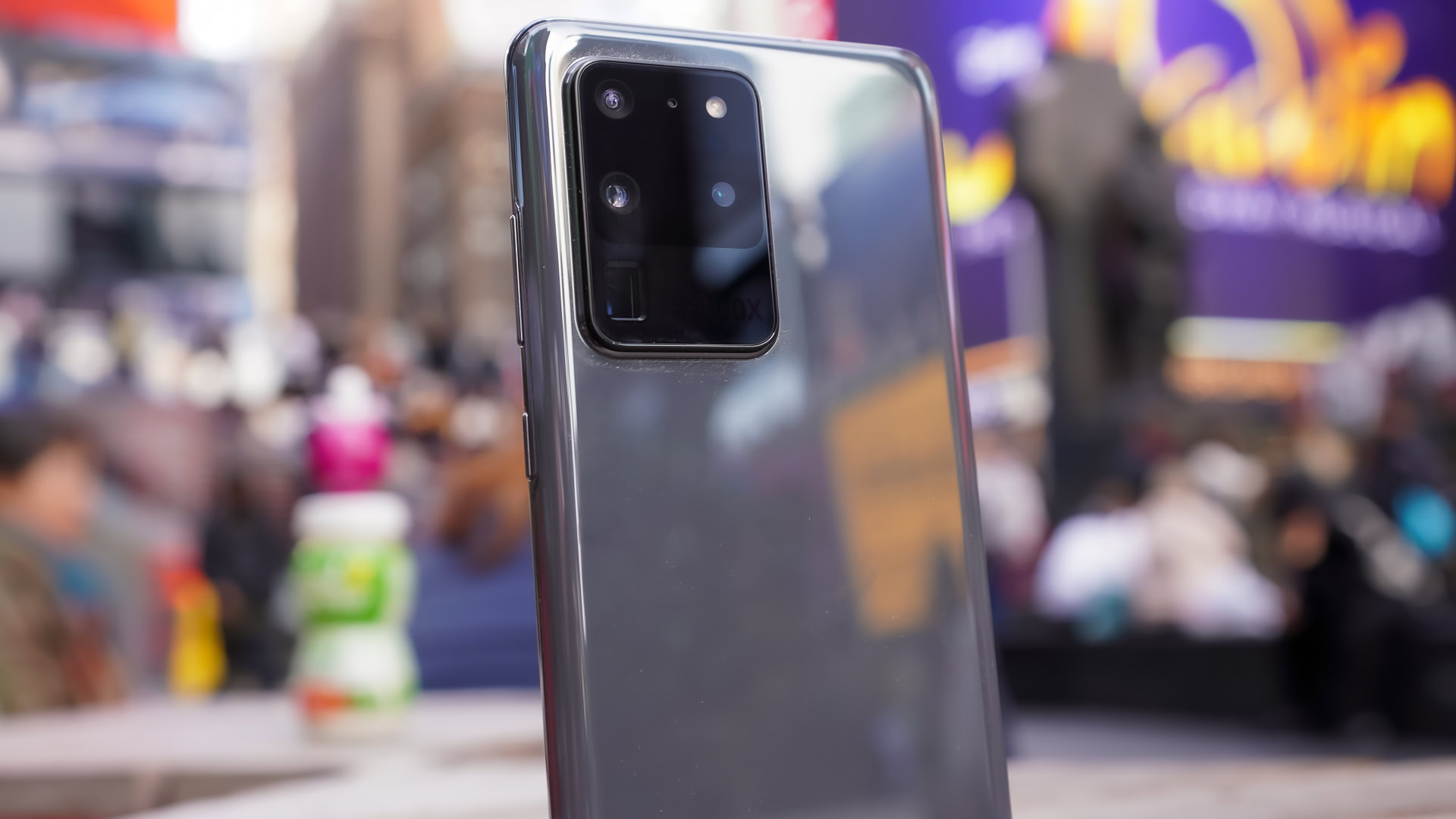
Samsung Galaxy S20 Ultra 5G
What we like
What we don't like
Samsung Galaxy S20 Ultra 5G
The Merriam-Webster dictionary defines the word “ultra” as: “beyond what is ordinary, proper, or moderate; excessive; extreme.” Similar to “mega” and “uber,” ultra is a word we use to overemphasize something: ultra-fast, ultra-powerful, ultra-big. It’s an apt name for a device such as the Samsung Galaxy S20 Ultra 5G, a phone that tries perhaps too hard to win at everything.
Long-term reviews: Samsung Galaxy S20 Ultra revisited | Samsung Galaxy S20 Ultra one year later
Samsung’s 2020 mega flagship takes every spec to the Nth degree, with the biggest this and the fastest that. It packs every possible feature into a chassis so large it practically qualifies as its own zip code. Cramming the best of the best into one monster package doesn’t necessarily have the result you’d expect. Find out what we mean in our uber-detailed Samsung Galaxy S20 Ultra review.
Setting the scene
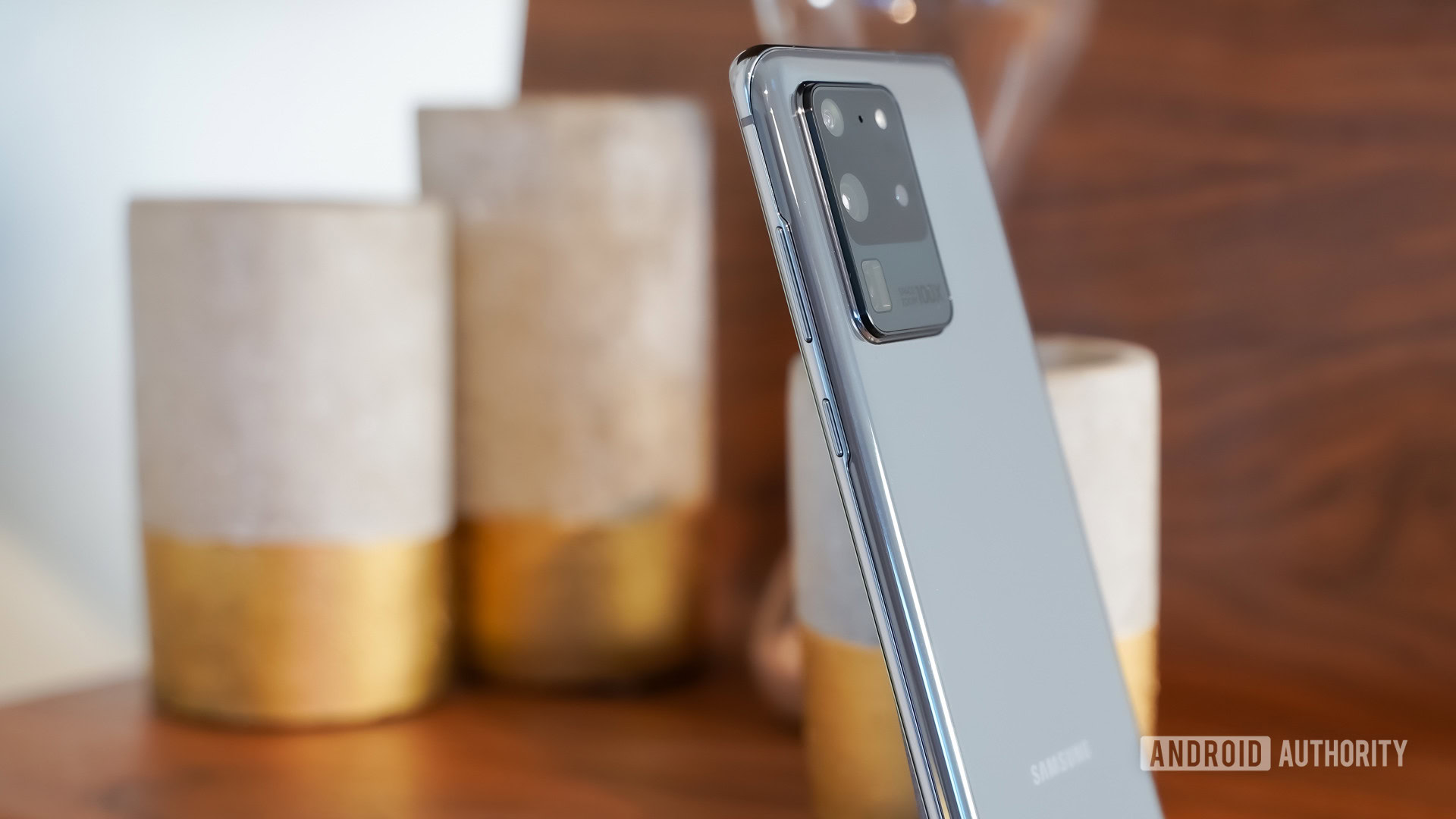
The Samsung Galaxy S series is the Korean company’s bread-and-butter product line. These phones, which come in three sizes, compete directly with the Apple iPhone, Google Pixel, and LG’s V series. Competition in this space is fierce. Every few months we get new models that seem to outgun the others with some new whiz-bang feature. This time around, Samsung focused on the camera.
See also: Samsung Galaxy S21 vs S20 series — is it worth an upgrade?
The company says it totally rebuilt the 2020 Galaxy S line around new imaging technology. Samsung did this in order to convince consumers it’s time to upgrade. The average time between phone purchases has stretched to a record 26.2 months, meaning people hold onto their phones for more than two years before buying a new one. Samsung wants S8 and S9 owners to pony up and adopt the S20, so it gave them a reason to: ultra-levels of camera zoom. Beyond zoom, the S20 adds number of attractive camera features, such as the ability to take hyperlapse videos at night.
Combined with the fastest processor available for the time, huge amounts of memory and storage, a dazzling display, and bountiful battery life, the S20 Ultra seemingly has it all. But does it really?
Design: Less soul
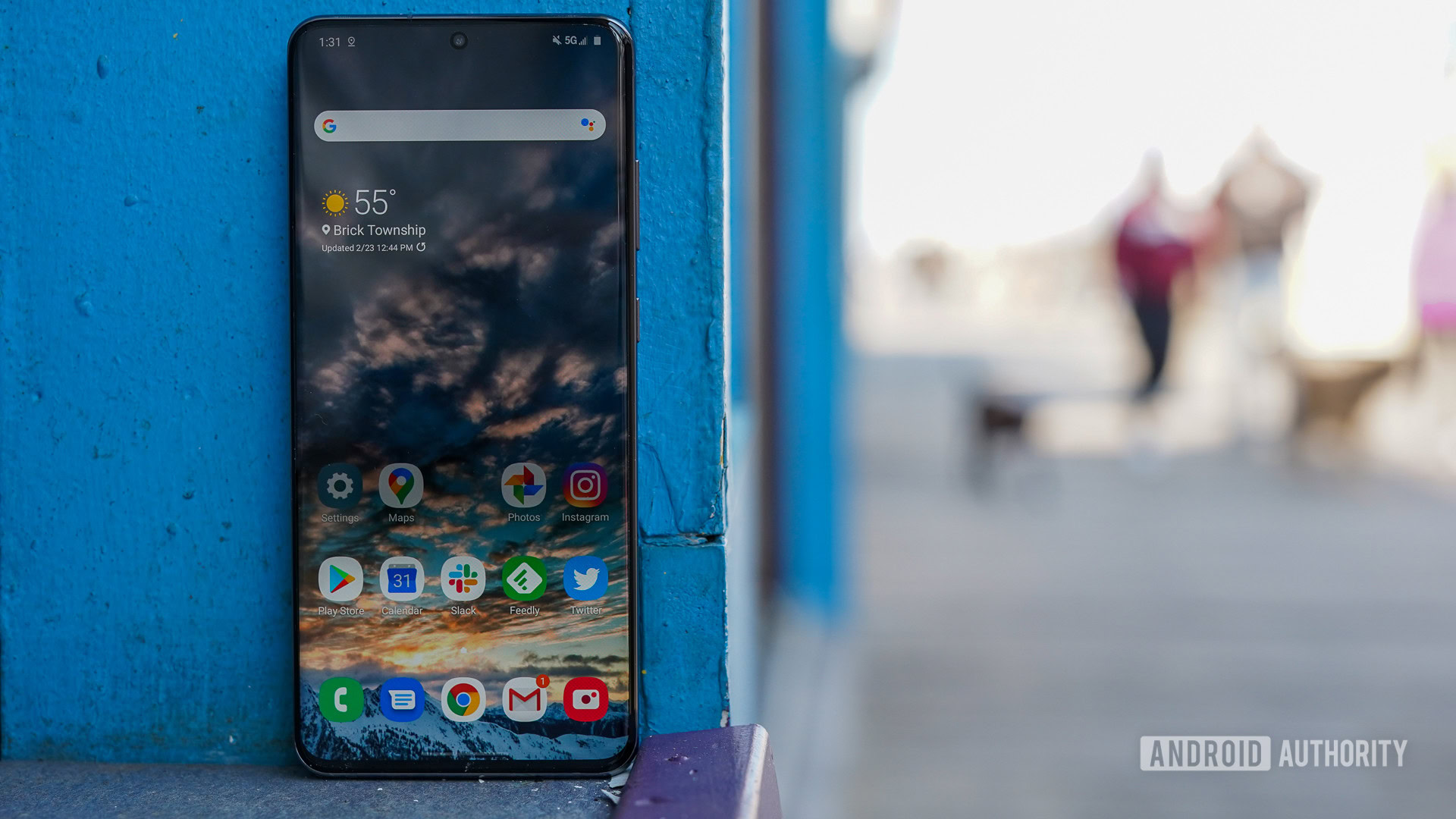
After years of trotting out retread plastic designs — and losing out to Apple’s industrial aesthetic — Samsung got wise and upped the ante. Between 2015’s Galaxy S6 and 2018’s Galaxy S9 the company’s design chops grew in leaps and bounds. By the time the Galaxy S10 arrived in 2019, the company was delivering some of the best-looking, most finely-crafted handsets in the market. For 2020, Samsung scaled back some and the S20 is somewhat the lesser for it.
Judging a book by its cover
Maybe it’s the color selection, maybe it’s the utilitarian (and, let’s face it, ugly) camera module on the rear, I dunno. I simply find the design to be ultra understated. The all-screen slab leaves almost no room for individuality. Looking at its face, the Samsung Galaxy S20 Ultra 5G could be any other phone on the market. Nothing about the shape, other than perhaps its sheer size, helps it stand out. For a price that starts at $1,399, I expect some personality. The 2021 S21 Ultra resolves this to some degree.
The color selection is particularly disappointing. I enjoyed the palette of the Galaxy S10. The Ultra is available only in Cosmic Black and Cosmic Gray. The word “cosmic” implies “out of this world.” There’s nothing cosmic about these shades. They’re the most conservative and boring, earthly options available.
It’s the details that matter
Samsung didn’t sell me on the S20 Ultra 5G’s looks, but it nailed the execution. Like its predecessors, the S20 Ultra 5G is a fine piece of hardware that exudes quality and craftsmanship. The front glass is slightly (and I mean slightly) less curved along the side edges than last year’s S10, but the rear glass has a steeper curve to it. The Gorilla Glass 6 panels are separated by a metal frame that’s thick on the bottom and top, and thin down the sides. These pieces are assembled tightly. The phone is sealed up and carries an IP68 rating, so you can accidentally dunk it in some water and it’ll survive the experience. I let it sit in a bowl of water for a few minutes and it emerged none the worse for wear.
Controls, ports, and buttons on the S20 Ultra are what you’d expect to see from Samsung’s flagship. The screen lock/power button and volume toggle are on the right edge of the phone. The buttons have tight, but satisfying, travel and feedback. There is no dedicated Bixby button, thank goodness. The combined SIM/microSD card tray is located on top, while the USB-C port and downward-firing speaker are on the bottom.
There is no headphone jack. Samsung eliminated the headphone jack on the Note 10 series, and that absence is carried over here. A pair of USB-C headphones is included in the box, but you’ll likely be better off with some of Samsung’s Galaxy Buds or any other pair of great true wireless earbuds.
The camera module is hideous. I know because my 13-year-old daughter is repulsed by it.
The camera module bugs me. Not just because it’s huge, but because the framing for it is made of plastic. If you touch it with your fingers you’ll notice it has a cheap, hollow feel to it. Ick, Samsung. To be fair to Samsung, however, the camera modules of rival phones the Apple iPhone 11 Pro Max and Google Pixel 4 XL are just as hideous. I know this because my 13-year-old daughter is repulsed by all three.
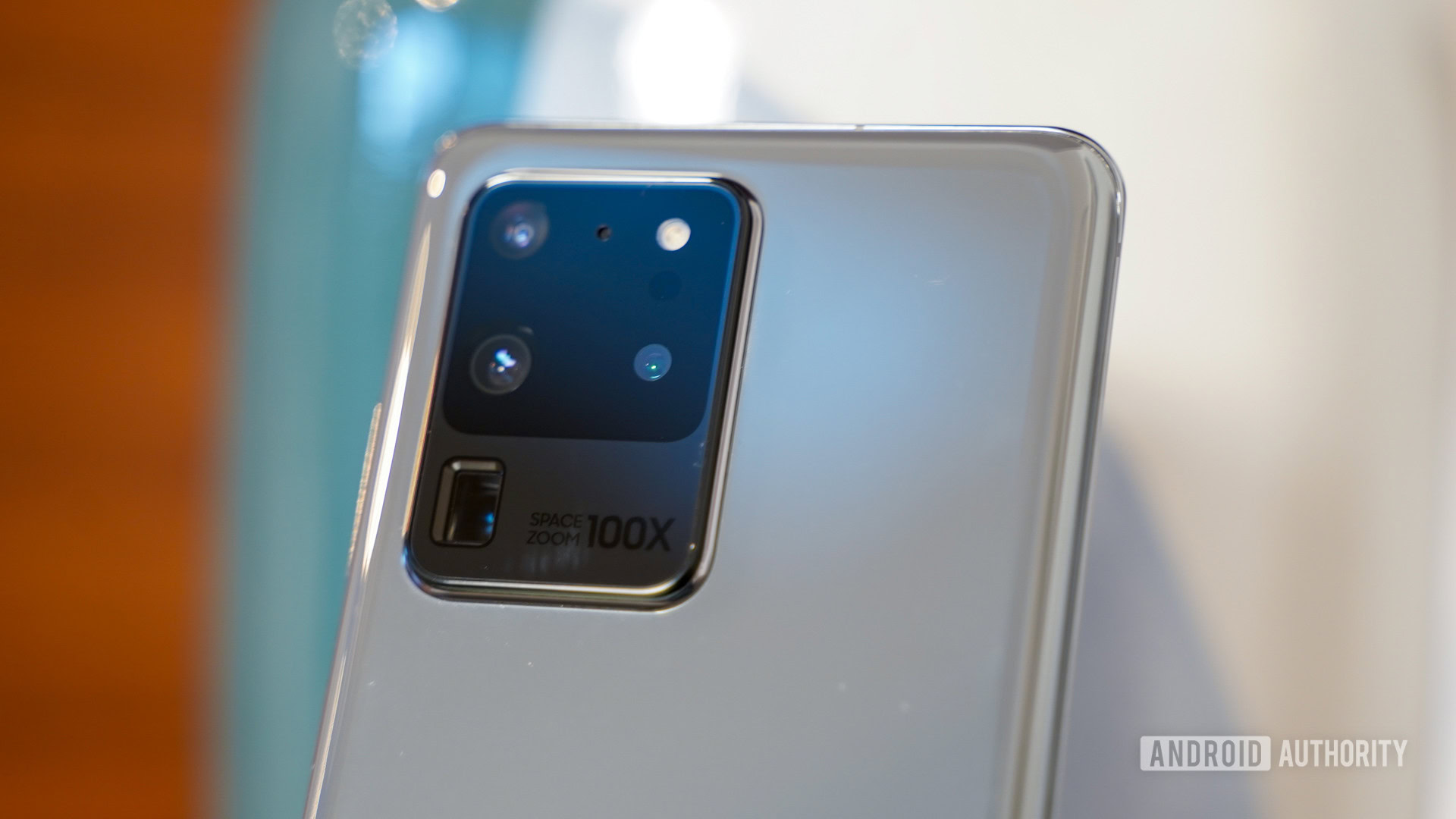
As for size and usability, this phone is not for everyone. It’s basically the same dimensions as the Galaxy Note 10 Plus, which means it’s enormous and requires two hands most of the time. The S20 Ultra 5G doesn’t fit well in pockets, despite its slippery surfaces, and more or less requires a case for protection, which will only make it bigger.
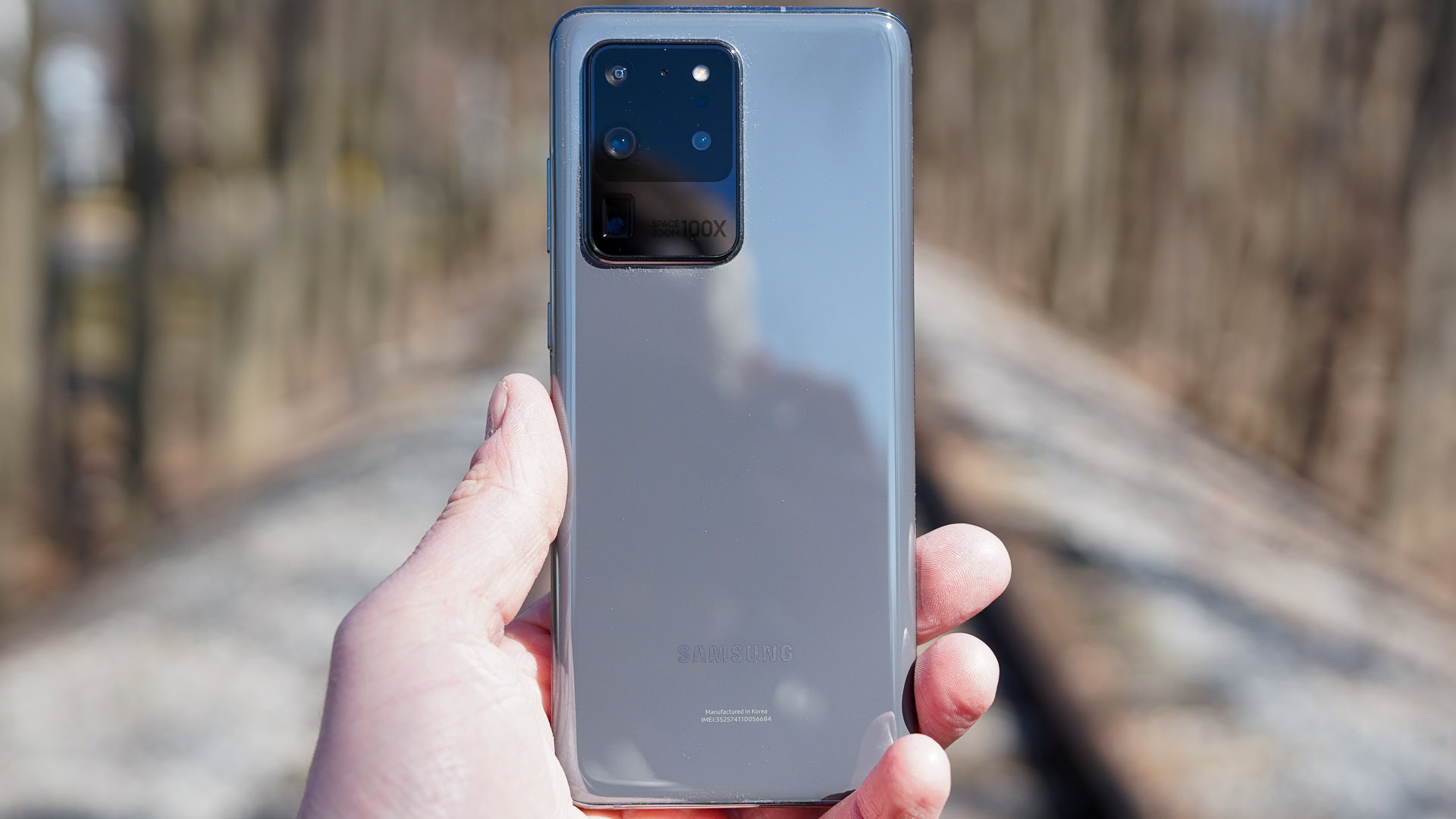
The Samsung Galaxy S20 Ultra 5G is ultra all right. It’s ultra-big and ultra-fine. It’s also not for everyone, as clearly it will be too much phone for some.
Display: Damn!
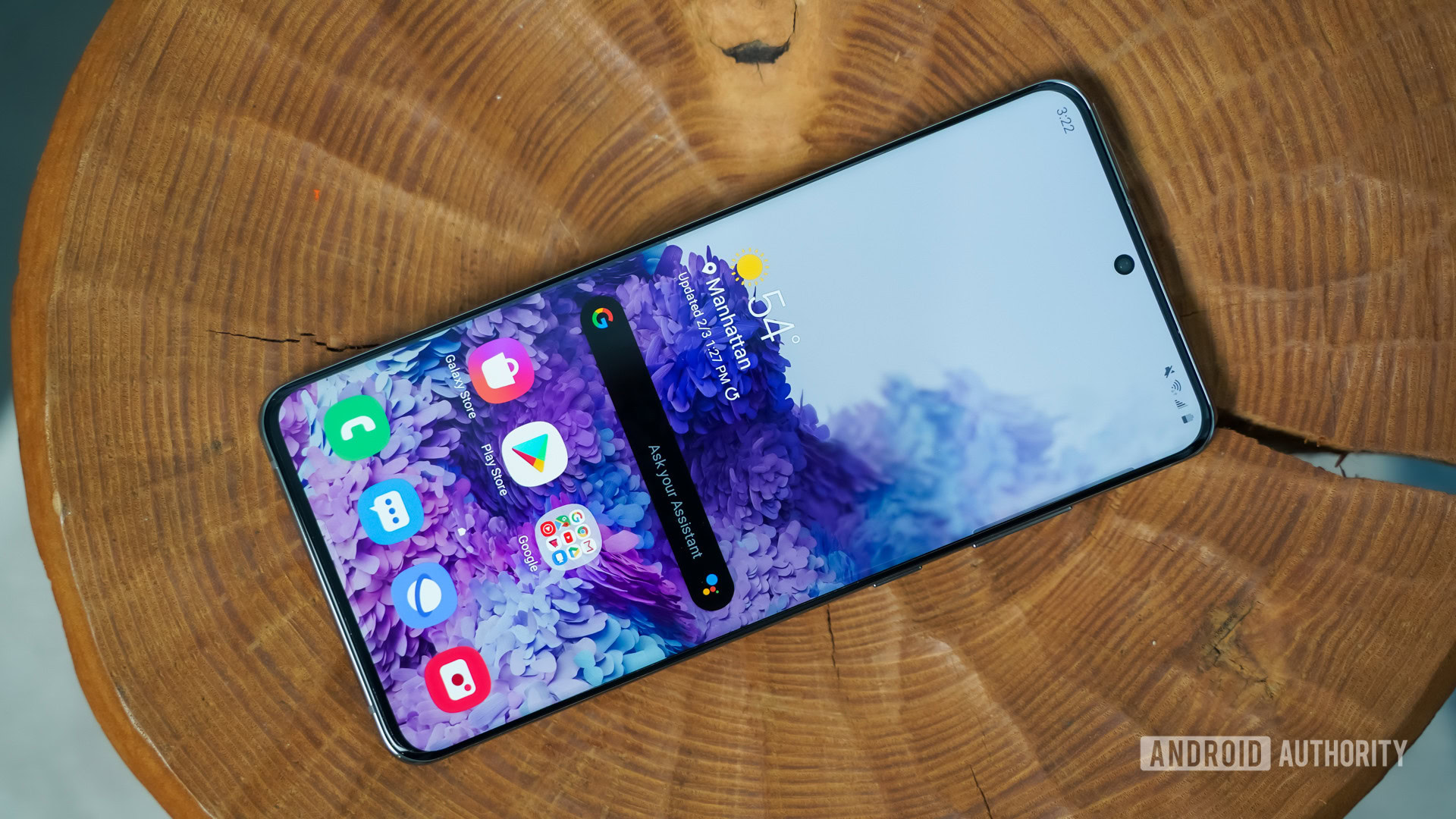
The display almost makes up for the S20 Ultra 5G’s lackluster design. Almost. It’s a stunning screen that’s one of the best you can find on any phone.
Samsung gave its flagship a 6.9-inch Dynamic AMOLED Infinity-O screen with multiple resolution and refresh rate options. Out of the box, it’s set to Full HD+, or 2,400 by 1,080 pixels. You can improve that to Quad HD+, or 3,200 by 1,440 pixels, or downgrade to HD+ at 1,600 by 720 pixels. Whichever you choose, you’re getting the same 20.5:9 aspect ratio. The sharpness of the display is simply outstanding, even at the medium setting. You will notice a slight degradation if you drop it down to HD+, but the Quad HD+ setting is eye-popping in its clarity.
You can choose screen refresh rates of either 60Hz, which is what most screens use, or 120Hz, which is better for gaming and such. Lemme tell you, the 120Hz setting gives the screen a luscious smoothness that has to be seen to be believed. With that said, you can’t combine the high pixel count and high refresh rate at the same time unlike some other panels on the market. At this point in 2021, all flagships offer the 120Hz option.
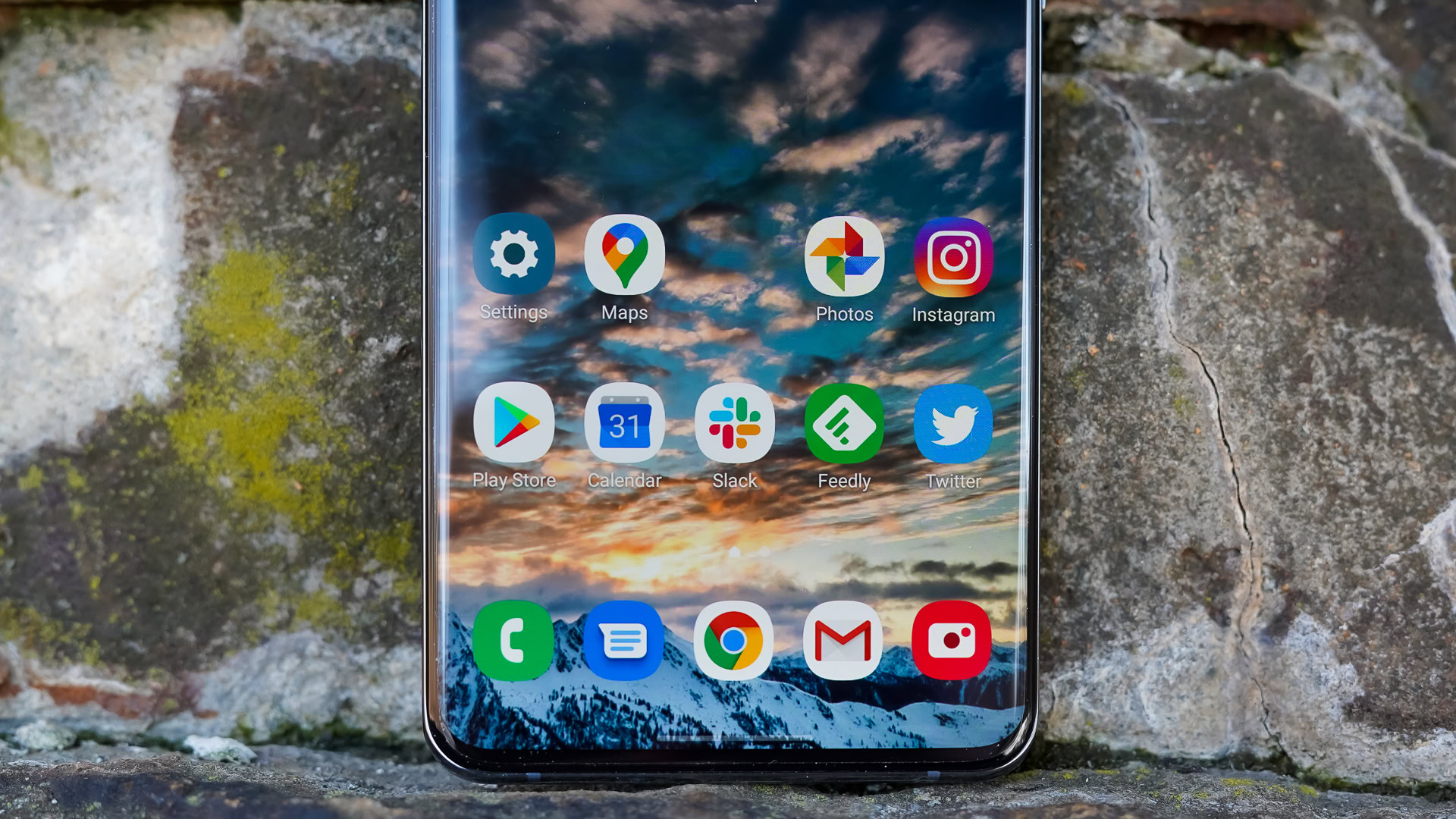
The Samsung Galaxy S20 Ultra 5G has a screen that simply dominates every other panel on the market.
Color is excellent. Of course the screen is HDR10+ certified, which means the right content will deliver incredible dynamic range. I checked out some HDR10 movies on Netflix and came away really impressed.
Samsung ensures that you can manage almost every factor of the screen and its performance. Choosing the full resolution or the doubled refresh rate will impact battery life, but you can tweak brightness, the blue light filter, color profile, and all the other typical settings.
The Samsung Galaxy S20 Ultra 5G has an ultra-amazing screen. That said, the flagship panels of 2021 definitely equal the S20’s
Ready. Set. Perform.
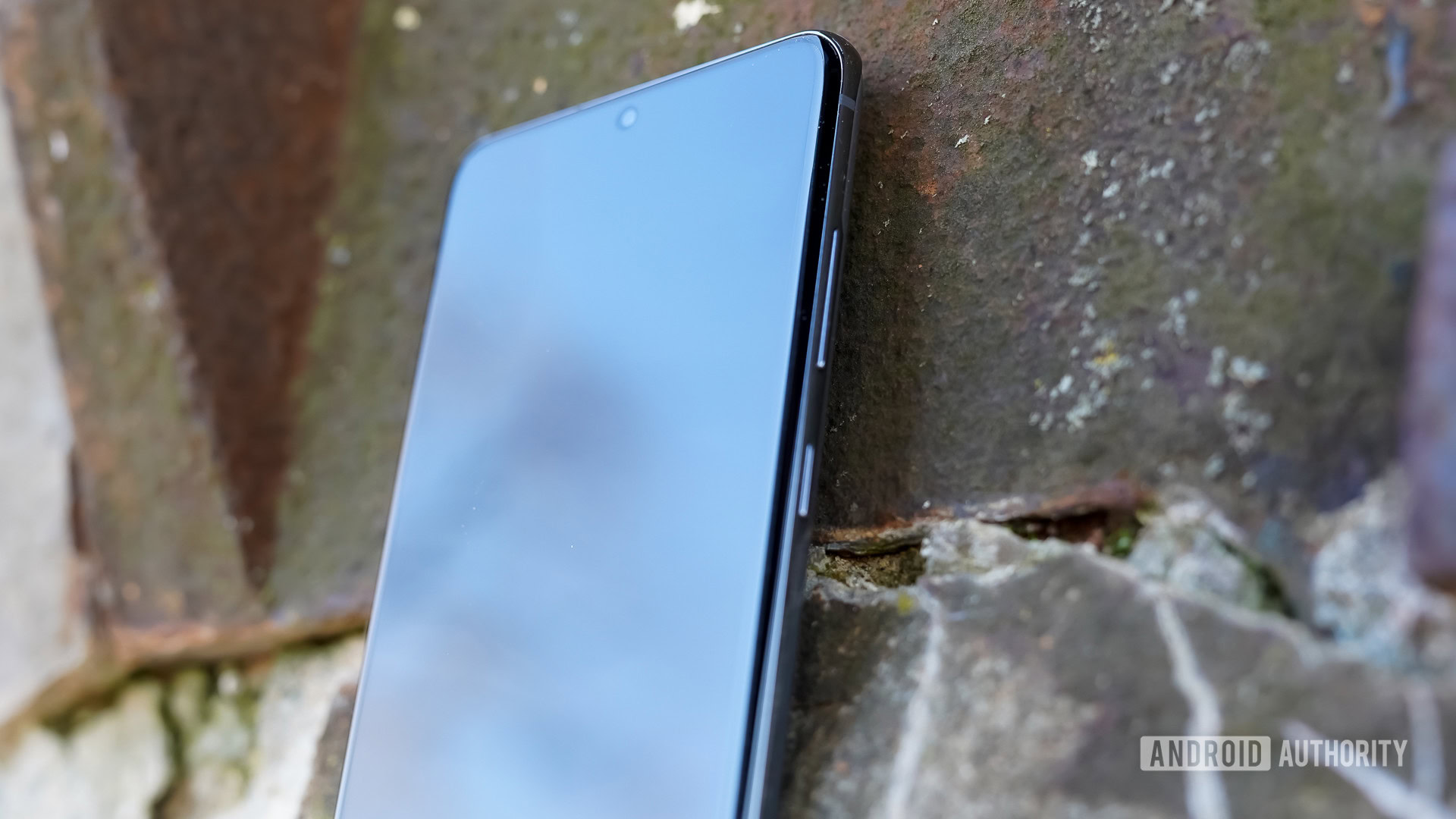
Samsung gave the Galaxy S20 Ultra 5G the fastest engine and the biggest fuel tank it could muster, fully expecting the combination to deliver the speed and stamina people demand. It doesn’t quite make it to the finish line — in some scenarios.
Processor: Let’s get snappy
First, the processor. The S20 Ultra 5G was one of the first phones to ship with the Qualcomm Snapdragon 865 processor on board. It comes with 12GB of RAM, but you can opt for 16GB if you have $1,599 to spare. Our review unit had the stock 12GB. Running 3DMark, AnTuTu, and GeekBench, the 865 absolutely destroyed every other phone currently in these tests’ respective databases at the time we originally published this review. The S20 Ultra bested 99% of all other devices tested, and delivered particularly stunning results when compared to the previous-generation Snapdragon 855 hardware. Wow.
The Snapdragon 888 of today’s flagships dramatically out-powers Snapdragon 865 phones, however, and should be a factor in your decision making here in 2021.
More importantly, the phone felt fast all the time. No matter what content or app you throw at the S20 Ultra 5G, it devours the calculations and offers buttery smooth performance. I noticed a slight, slight slowdown when I bumped the S20 Ultra 5G to the full resolution or faster refresh rate. That’s a lot of information for the processor to crunch, however, and the phone does an admirable job.
As always, Samsung allows you to empty out the memory and clean things up to give the phone a performance jolt.
While the Galaxy S20 Ultra’s performance has since been surpassed by Snapdragon 888-powered phones, the Snapdragon 865 is still a very capable chip and will be for years to come.
Battery: Live long and prosper
Then there’s the 5,000mAh battery. The S20 and S20 Plus have 4,000 and 4,500mAh batteries, respectively. The biggest phone gets the biggest battery and Samsung claims it will deliver two days of battery life. Again, this depends.
On a day when I set the phone to the faster 120Hz refresh rate at Full HD+ resolution, with the screen brightness and battery to adaptive mode, the 5,000mAh pushed from morning to night with no problem. There was a small reserve left in the tank, definitely not enough to get it through even half another day. I had to charge it that night. I got the same results when I set the phone to the full Quad HD+ resolution at 60Hz.
It’s clear to me that if Samsung allowed owners of the S20 Ultra 5G to use both the full resolution and the faster refresh rate at the same time that the battery would die a much quicker death. That said, it’s fairly common among today’s flagships that you cannot combine the top speed and highest resolution.
If you go with the conservative Full HD+ resolution and 60Hz refresh rate, the battery definitely shows more longevity.
Things are different if you go with the Full HD+ resolution option and 60Hz. At this conservative setting, the battery definitely shows more longevity. I coaxed it through a full day and most of a second before it gave out completely. This is likely the setting that most people should use most of the time. It stinks that the screen won’t dynamically shift from 60Hz to 120Hz when you start playing games.
Last, charging the phone. The Samsung Galaxy S20 Ultra supports 45W wired charging and 25W wireless charging. Unfortunately, only a 25W charging brick comes in the box. You have to pay extra for the faster charger. The phone ingested current like a champ. I found it boosted the battery by 50% after just 27 minutes plugged in, and after just 35 minutes on a charging pad. A full charge took about an hour. Considering the size of the battery, that’s really good.
Camera: Space Zoooooooom
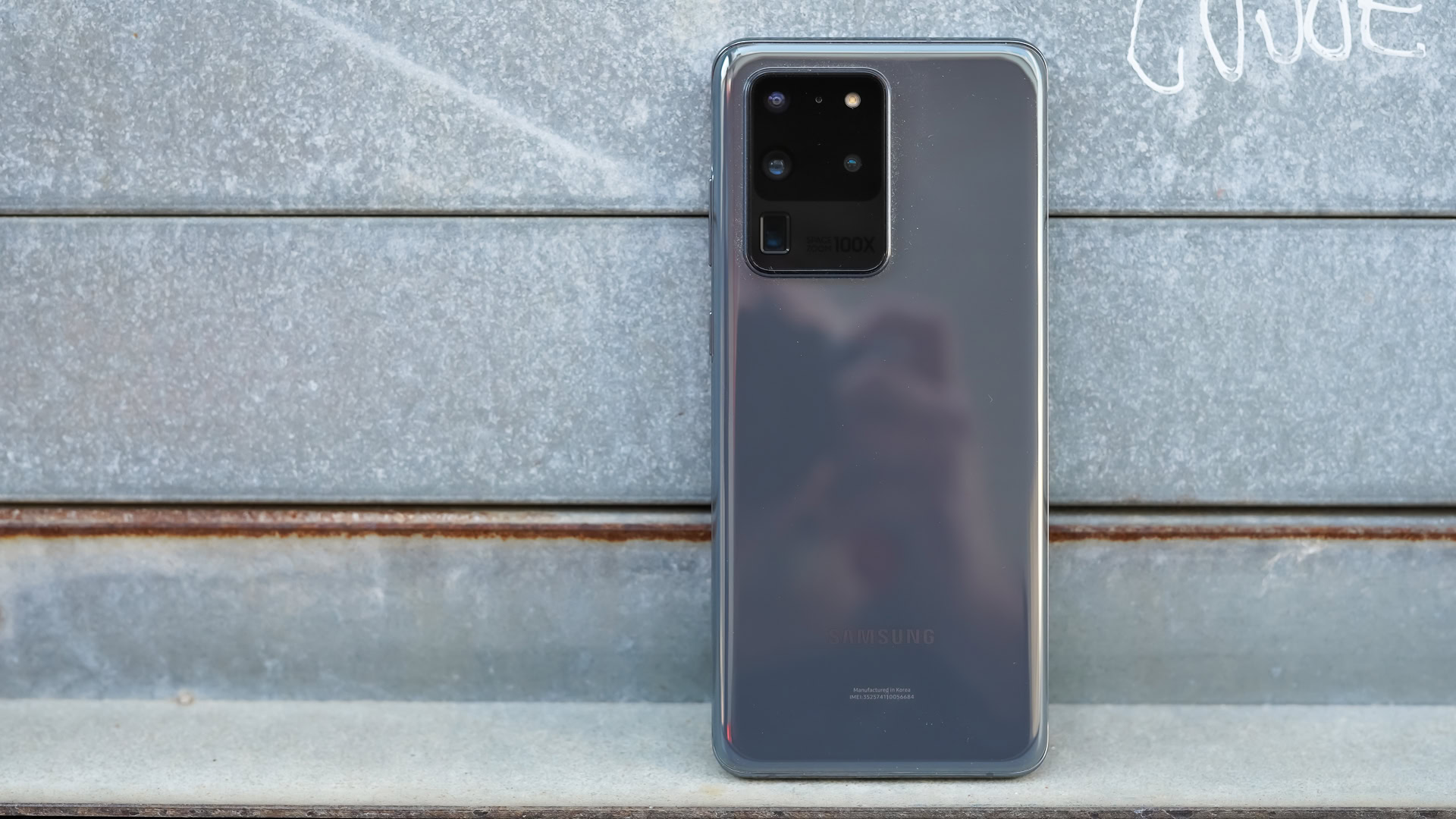
The camera should be — and is — the number one selling point for this phone. It’s a monster of an imaging system and, at launch, was more advanced than just about anything we’d seen before. The basics are these.
Samsung gave the Galaxy S20 Ultra 5G a quad-camera system on the rear. The standard lens boasts a 108MP sensor at f/1.8. By default, it shoots 12MP images, binned down by a factor of nine from the full pixel count (nona-binning). It is joined by an ultra wide-angle 12MP camera at f/2.2, an optical telephoto 48MP camera at f/3.5, and a time-of-flight camera to help process depth information. Some of the features Samsung boasts about include 100x zoom and 8K video capture.
The main sensor is a beast. The idea behind the high-resolution sensor is two-fold: First, to allow more light and, second, to offer incredible detail. This sensor is what powers the S20 Ultra’s good low-light performance. While the base setting is to take 12MP shots, you can opt to shoot the full 108MP at any time. The full resolution shots are indeed impressive in their detail and the noise isn’t as bad as I expected it to be.

Most standard daytime shots look nearly perfect. All the beach/boardwalk shots below are spot on in their accuracy. In fact, the ice cream shot is better than real life, as the shadows are more or less eliminated in just the right way to allow for detail. Zoom in on the balloons in the boardwalk game and you’ll see plenty of detail, though some noise too. My Pixel, by way of comparison, didn’t capture so much detail. The only issue I noticed was white balance, which every so often skewed too warm.

I really like what’s possible with the wide-angle shooter. There’s so much you can do, such as the Times Square shots I captured down below.

Even the low-light shot from the bar turned out well. It was incredibly dark in there. The clarity is quite impressive, and the colors are perfect with little noise.

It’s important to point out that the phone had focusing problems with the main camera at launch. Something about the 108MP sensor and Samsung’s software didn’t play nice. Samsung was forced to apply several updates to the camera software in an attempt to improve it. There was some improvement, to be sure, but the phone was still slow to focus with the main shooter and sometimes produced soft images. Samsung corrected the issue with the S21 Ultra’s camera.
There are some really neat new camera modes available to the Samsung Galaxy S20 family, including Single Take, Night Mode, Night Hyperlapse, and more. Here are some Night Mode samples with the dark shots taken in normal mode and the second taken with Night Mode on. You can see the difference it makes. It’s rather like seeing in the dark, though there’s a bit of noise.
Single Take is the best of the bunch. When you press the shutter button and record three to 10 seconds of video, it slices and dices the results and gives you up to nine different photo types, including video, AI best shot, boomerang, and such. It takes practice, and isn’t always perfect, but it opens up a new realm of possibility when you’re looking to snag more than a single still photo at the press of a button.
Let’s talk zoom. Samsung says the phone is capable of delivering 100x zoom. That’s technically true, but it’s not the selling point you think it is. Using a combination of the lenses, optical zoom, and digital cropping, Samsung is able to create a range of zoom options. You can capture shots at 0.5x, 1x, 2x, 4x, 5x, 10x, 30x, and 100x using simple on-screen buttons. Alternately, you can drag the slider up and down to find the right amount of zoom for the shot. You can see the progression in the samples below.
Clearly some of these are more usable than the others. The 30x, for example, borders on worthless, and the 100x (below) is clearly no use. No matter what I was shooting, there was never a scenario where the 100x shot turned out well. Don’t get me wrong, though. If you look at the 0.5x shot and the 100x shot and realize they came from the same phone, you have to agree it’s impressive to some degree.

It’s important to spell out the differences. The phone is able to capture 4x optical zoom thanks to the periscoped 48MP telephoto camera. Everything beyond that is hybrid, which means a blend of optical and digital crop. Samsung says it is using AI to help reduce the unavoidable shakes in your hands that are obvious at 100x, but I can’t say it does a particularly great job of it. I would set your expectations for “okay” zoom at 30x and nothing more.
Then there’s 8K video capture. The phone can capture and even trim 8K video directly on board. While the vast majority of TVs sold today are Full HD or 4K, 8K TVs are slowly making their way into the market. Still, for most people that means the only thing you’re doing with 8K video is chewing up your device storage. In 2021, however, 8K capture has become a standard feature on flagships.
The phone is able to capture 4x optical zoom thanks to the periscoped 48MP telephoto camera.
Video I shot with the phone does look amazing. All you need to do is set it to 4K at 60fps and sit back and enjoy. It’s sharp, colorful, properly exposed, and on-point when it comes to white balance. You’ll be impressed. I really like one of the newer features that allows you to seamlessly switch from recording with the main camera to the selfie camera so you can add yourself to a clip. This worked really well. Video also supports live focus mode, or bokeh. Just like still images, this uses the ToF camera to help judge depth and create a portrait-like effect when capturing video. It’s not perfect, but it can add a cool look to your footage.
The selfie camera is a 40MP job that bins down to 10MP. You can see in these samples that it does a fine job. The addition of the a time-of-flight sensor means depth information is more accurate. See how clearly I stand out from the background in the portrait sample below.
At the end of the day, what I can tell you is that the Samsung Galaxy S20 Ultra 5G has a flexible camera setup that can still deliver the goods under the right conditions.
Odds and ends
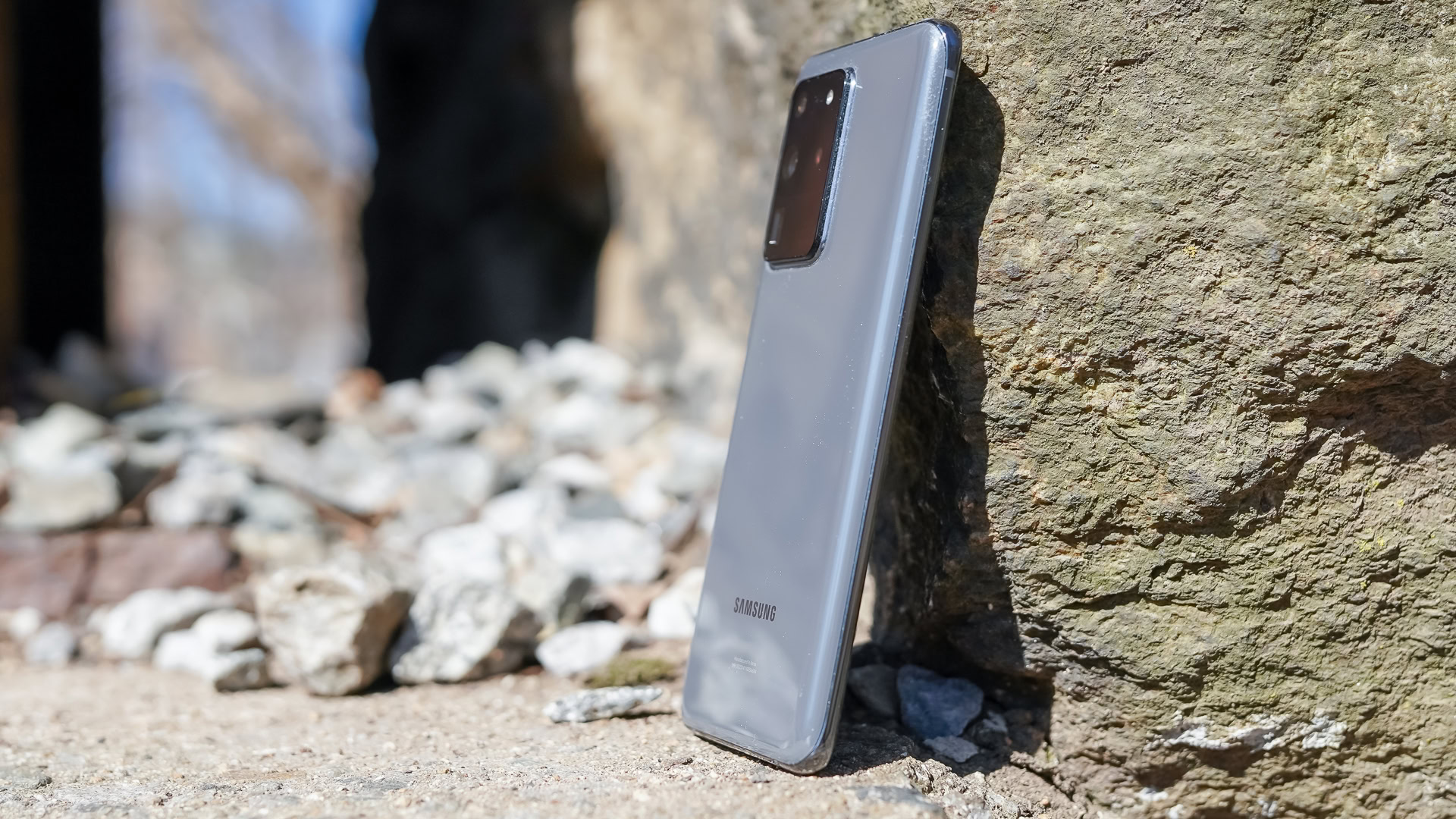
Samsung solved some pain points with the Samsung Galaxy S20 Ultra 5G, and I appreciate that.
First up is a feature called Music Share. This is meant to get around the in-car Bluetooth tangle. You know the drill. You’re in the car with your phone paired to the stereo. You passenger wants to play their tunes via the car’s speakers. To do that, however, you’d have to unpair your phone, pair theirs, and such. A total pain. Music Share is essentially Bluetooth passthrough. Your friend pairs their phone with your S20 Ultra 5G, and can then control the car stereo (or any Bluetooth speaker). It does require that the second device is running at least Android 10. I tested this on my personal car and it worked very well. Thanks, Samsung!
Similar to Apple’s AirPlay, a new function called Quick Share makes it easy to pass files back and forth. You turn this tool on via the quick settings menu. The software prefers Samsung users, but this lets you curate a list of people who can blindly send you stuff. The other option is “everyone” which is not an option as far as I am concerned. I checked it out with another Samsung device hand and it worked flawlessly for sending photos and videos back and forth.
The phone supports 5G from AT&T, T-Mobile, and Verizon Wireless. When tested with a Verizon SIM card, we found 5G performance to be barely better than LTE 4G, at least on Big Red’s mid-band 5G. We weren’t able to find mmWave 5G to test speeds there, which should be much faster. Since the time of publishing, Verizon’s mmWave is a bit more available, and T-Mobile’s mid-band 5G is significantly more available. We tested the phone more recently and found that it did a much better job with respect to 5G performant.
Interestingly, Samsung adopted Google’s Duo video chat app and baked it into the native dialer of the S20 Ultra. The button is simply there and, when touched, initiates a Duo video chat with contacts who also use Duo. I had trouble getting this set up. You have to open the Duo app separately from the app drawer to get it to sync with the dialer the first time. After that, be sure you use a number that’s associated with your Google account. Once I cleared a few hurdles such as these, it worked.
Samsung took aim at gaming phones. Along with the use allotment of RAM and 120Hz refresh rate, a new feature allows S20 Ultra owners to suspend up to five apps in the RAM. The idea is to spare people the burden of waiting for enormous games such as Fortnight to reload when you return to the action. It does, in fact, work as designed. Moreover, the screen supports touch response at a rate of 240Hz during gameplay. This means the display can capture your taps and swipes more accurately.
See also: The best Samsung Galaxy S21 Ultra cases you can buy
On the security front, you’ve got a Face ID clone, an in-display fingerprint reader, and the usual collection of PIN, pattern, and password options. I found the facial recognition tool to work really well, but it wasn’t perfect. Same is true for the fingerprint reader. While it is easy to train, the reader is placed just a bit further up the display and I had a hard time locating it consistently. Shame Samsung didn’t adopt the latest fingerprint reader from Qualcomm, which is much larger.
The phone ships with Android 10 and Samsung’s One UI 2.1. It’s the best version of Samsung’s software, but even so I think some people will find it’s too much, or they won’t like the look. For starters, you can’t add Google’s home feed to the home screen panels. Instead, you’ll have to put up with Samsung’s version thereof. Also, Bixby is the default personal assistant, not Google Assistant. You’ll have to change that in the settings. At least Samsung offers gobs of room for customization.
Samsung has since updated the phone to One UI 3.1, which is much better than 2.1. The software is more cohesive and feature-rich. You still can’t add Google’s home feed to the home screen panel, but at least Bixby is a distant memory.
Samsung Galaxy S20 Ultra specs
| Samsung Galaxy S20 | Samsung Galaxy S20 Plus | Samsung Galaxy S20 Ultra | |
|---|---|---|---|
Display | Samsung Galaxy S20 6.2-inch Dynamic AMOLED 3,200 x 1,440 20:9 ratio 120Hz refresh rate at 1080p 60Hz refresh rate at 1440p HDR10+ certified | Samsung Galaxy S20 Plus 6.7-inch Dynamic AMOLED 3,200 x 1,440 20:9 ratio 120Hz refresh rate at 1080p 60Hz refresh rate at 1440p HDR10+ certified | Samsung Galaxy S20 Ultra 6.9-inch Dynamic AMOLED 3,200 x 1,440 20:9 ratio 120Hz refresh rate at 1080p 60Hz refresh rate at 1440p HDR10+ certified |
Processor | Samsung Galaxy S20 Qualcomm Snapdragon 865 or Samsung Exynos 990 | Samsung Galaxy S20 Plus Qualcomm Snapdragon 865 or Samsung Exynos 990 | Samsung Galaxy S20 Ultra Qualcomm Snapdragon 865 or Samsung Exynos 990 |
RAM | Samsung Galaxy S20 12GB | Samsung Galaxy S20 Plus 12GB | Samsung Galaxy S20 Ultra 12 or 16GB |
Storage | Samsung Galaxy S20 128GB | Samsung Galaxy S20 Plus 128 or 512GB | Samsung Galaxy S20 Ultra 128 or 512GB |
MicroSD | Samsung Galaxy S20 Yes, up to 1TB | Samsung Galaxy S20 Plus Yes, up to 1TB | Samsung Galaxy S20 Ultra Yes, up to 1TB |
Battery | Samsung Galaxy S20 4,000mAh Fast wired and wireless charging | Samsung Galaxy S20 Plus 4,500mAh Fast wired and wireless charging | Samsung Galaxy S20 Ultra 5,000mAh Fast wired and wireless charging |
Cameras | Samsung Galaxy S20 Rear: - Wide-angle: 12MP, 1/1.76", ƒ/1.8, 1.8µm - Telephoto: 64MP, ƒ/2.0, .8µm - Ultra-wide: 12MP, ƒ/2.2, 1.4µm 3x hybrid optical/digital zoom, Super Resolution Zoom up to 30x Front: - 10MP, ƒ/2.2, 1.22µm, AF | Samsung Galaxy S20 Plus Rear: - Wide-angle: 12MP, 1/1.76", ƒ/1.8, 1.8µm - Telephoto: 64MP, ƒ/2.0, .8µm - Ultra-wide: 12MP, ƒ/2.2, 1.4µm - VGA time-of-flight sensor 3x hybrid optical/digital zoom, Super Resolution Zoom up to 30x Front: - 10MP, ƒ/2.2, 1.22µm, AF | Samsung Galaxy S20 Ultra Rear: - Wide-angle: 108MP, 1/1.33", ƒ/1.8, .8µm - Telephoto: 48MP, ƒ/3.5, .8µm - Ultra-wide: 12MP, ƒ/2.2, 1.4µm - VGA time-of-flight sensor Hybrid optical/digital zoom at 10x Super Resolution at 100x Front - 40MP sensor, ƒ/2.2, .7µm, AF |
Connectivity | Samsung Galaxy S20 4G LTE support 5G (sub-6GHz, DSS, TDD/FDD, SA and NSA, no mmWave) | Samsung Galaxy S20 Plus 4G LTE support 5G (sub-6GHz, DSS, TDD/FDD, SA and NSA, mmWave) | Samsung Galaxy S20 Ultra 4G LTE support 5G (sub-6GHz, DSS, TDD/FDD, SA and NSA, mmWave) |
Operating System | Samsung Galaxy S20 One UI 2.0 Android 10 | Samsung Galaxy S20 Plus One UI 2.0 Android 10 | Samsung Galaxy S20 Ultra One UI 2.0 Android 10 |
Water resistance | Samsung Galaxy S20 IP68 | Samsung Galaxy S20 Plus IP68 | Samsung Galaxy S20 Ultra IP68 |
Security | Samsung Galaxy S20 Ultrasonic fingerprint sensor, face unlock | Samsung Galaxy S20 Plus Ultrasonic fingerprint sensor, face unlock | Samsung Galaxy S20 Ultra Ultrasonic fingerprint sensor, face unlock |
Color | Samsung Galaxy S20 Cosmic Grey, Cloud Blue, Cloud Pink | Samsung Galaxy S20 Plus Cosmic Grey, Cosmic Black, Cloud Blue, Aura Blue. | Samsung Galaxy S20 Ultra Cosmic Grey and Cosmic Black |
Dimensions and weight | Samsung Galaxy S20 69.1x151.7x7.9mm 163g | Samsung Galaxy S20 Plus 73.8x161.9x7.8mm 186g | Samsung Galaxy S20 Ultra 76x166.9x8mm 220g |
Does the Galaxy S20 Ultra 5G cost too much?
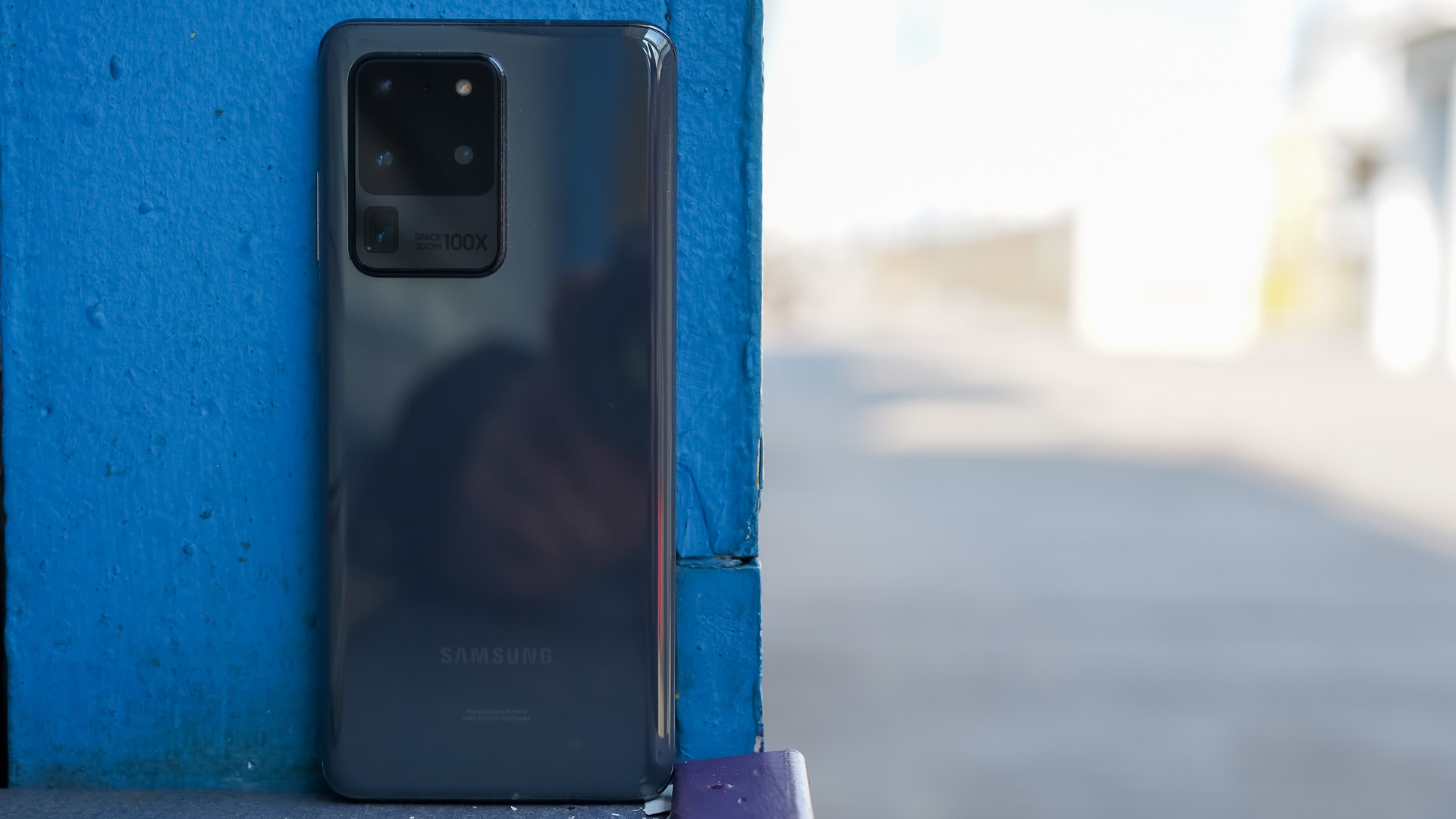
Hell yeah it does. The Samsung Galaxy S20 Ultra 5G costs a whopping $1,399 for the 12GB/128GB model and $1,599 for the 16GB/512GB model. Those prices are absurd — particularly if you’re paying in full upfront. The worst part? It still costs the same high price in 2021. The S21 Ultra sells for hundreds less and is a better deal.
It's hard to say with a straight face that the Samsung Galaxy S20 Ultra 5G is value for money.
It’s hard for us to say with a straight face that the Samsung Galaxy S20 Ultra 5G is value for money. It’s ludicrously expensive and not meant for people on a strict budget. The one saving grace here is that Samsung itself, as well as carriers, are offering discounts and deals on the phone. If you can score a few hundreds dollars off the S20 Ultra 5G with a trade-in or other deal, then it makes a lot more sense.
More to the point, the competition in the flagship space of early 2021 is fierce and unrelenting. Apple’s iPhone 12 Pro family delivers incredible performance and costs a bit less than the S20 Ultra. Google’s Pixel 5, while not a true S20 Ultra competitor, is far less expensive, as is the OnePlus 9 Pro, Xiaomi Mi 11, and OPPO Find X3 Pro. These all represent a better value. And, as mentioned, the entire S21 range is not only better from a financial perspective, the newer phones are simply improved in every way.
Should you buy the Samsung Galaxy S20 Ultra 5G?
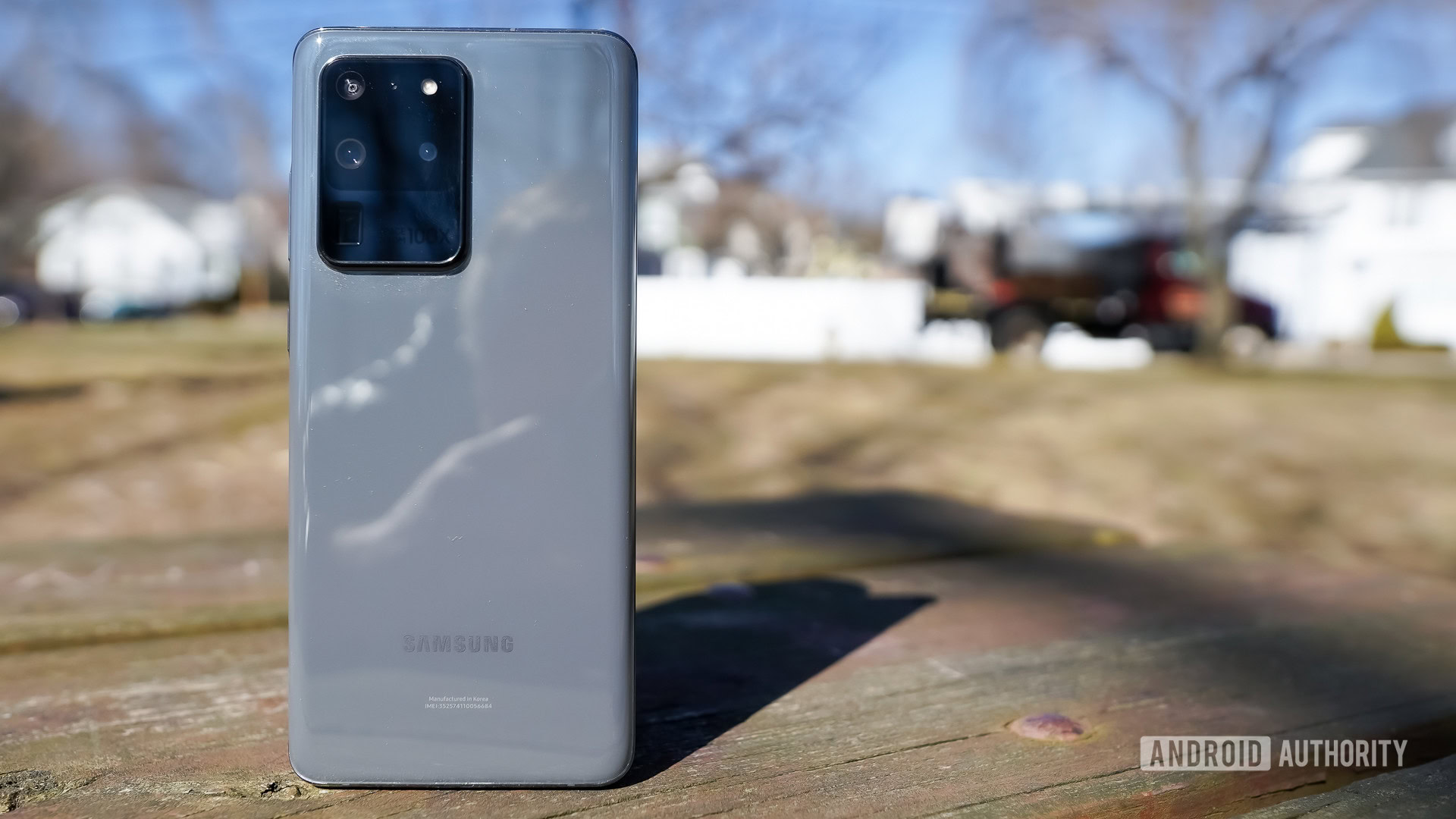
At this point in 2021, we no longer recommend the Samsung Galaxy S20 Ultra. Despite all the things the phone has going for it, the fact that Samsung has not discounted the phone leaves us questioning its value. It’s simply not worth the $1,399 asking price any more, particularly when you can get a better phone for less.
The Samsung Galaxy S21 Ultra is unquestionably a better buy. It’s a better phone and, like the S20 Plus at launch, costs $200 less than the 2020 Ultra variant.
Check out: The best Samsung phones
With that said, there’s nothing inherently wrong with the Samsung Galaxy S20 Ultra 5G. It offers an incredible array of features in a slick package. I simply think the package is ultra big and, well, ultra-pricey — unless you can find one for a good discount.
